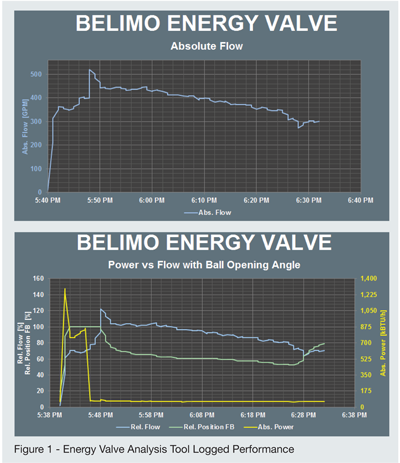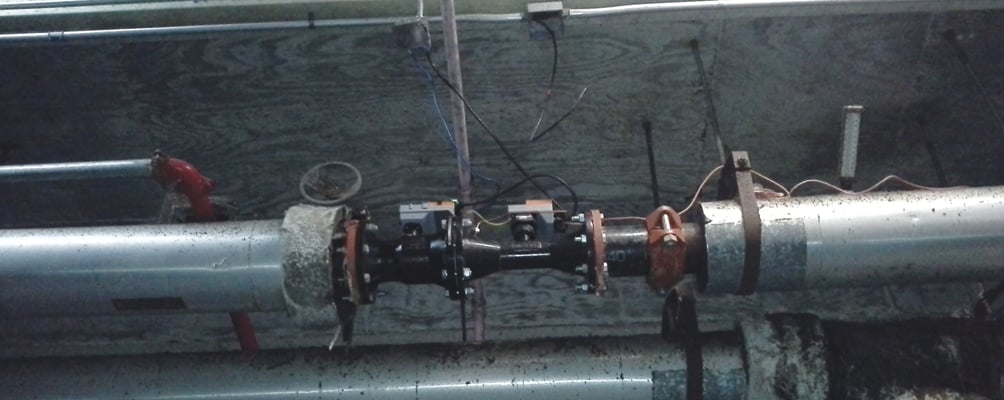The Belimo Energy Valve™ Cures Medical University’s Low Delta-T
The University of Miami medical campus saves thousands of dollars and increased plant capacity with the Belimo Energy Valve retrofit.
The University of Miami’s Leonard M. Miller School of Medicine says it prides itself on bringing medical research from “bench to bedside,” meaning doctors are providing patients in Southern Florida with the latest cutting-edge developments in medical care. On its sprawling campus and in its state-of-the-art buildings, doctors and researchers are unlocking the secrets to not only infectious diseases, but the future of stem cells and genetics.
What many people may not know is the preventative care that is going on behind the scenes when it comes to the university’s mechanical systems. At the heart of the university is a 47,000-sq-ft chiller plant with 12,000 tons of installed capacity, providing the much-needed cooling and chilled water for the campus’s hospitals and research buildings. While the chiller plant is still fairly new, having just opened in 2011, some buildings on campus were not operating as efficiently as they could, wasting thousands of gallons of chilled water. However, the problem was not with the chiller plant, but the cooling coils in several of the campus facilities.
The solution to the problem came in the form of the latest research and development from Belimo — The Belimo Energy Valve.
The diagnosis – Low Delta-T
It‘s a common mechanical illness - Low Delta-T. It occurs when air-handling coils are oversized, demand too much water, or foul and degrade with age. Poor system balance and improperly installed and controlled air handlers can also contribute to low Delta-T.
When this happens, air-handler efficiency and heat transfer plummets. In turn, chillers and pumps work overtime in order to maintain a given temperature set point. Return water temperature to the chiller is lower than the intended design forcing more water to be pumped through the system. As more and more gallons of water move through the system, not only is efficiency in question, but utility costs can go through the roof.
This was the diagnosis for some of the buildings on the University of Miami Medical campus. Even with a new chiller plant, and a mix of new and older facilities, low Delta-T was negatively impacting the efficiency on campus — that is until Kerney and Associates of Dania Beach, FL, stepped in.
The specialty piping and energy services company has had the University of Miami Medical campus as a client for several years, so when they learned about the Belimo Energy Valve, they knew it was something they had to share with the university, especially since Kerney and Associates specializes in retrofit opportunities that will provide a maximum return on investment for clients.
“We do a lot of business with them,” said Ron Bogue, Assistant Vice President for facilities and services at the UM Medical campus. “They came to us and introduced us to the Belimo Energy Valve line.”
The Energy Valve is a pressure independent valve optimizes and documents water coil performance. The valve includes an electromagnetic flow sensor and temperature sensors that monitor supply and return water. Differential temperature is monitored to make sure that the Delta-T across the valve is performing at the desired set point. If Delta-T drops, the valve modulates the flow of water at the coil, which improves system efficiency.
To make sure that the valve and the coils are working as specified, the valve also has BACnet capabilities. Each valve has a static IP address, allowing technicians on campus to
log on to the Internet, via a PC or tablet device, and check Delta-T readings and flow efficiency at the valve in real time.
“It is a very informative diagnostic tool,” said Bogue. “I’m a facilities guy who is definitely into preventative maintenance. We are always looking for ways to improve efficiency and preventative services on campus.”
With the valves BACnet capability, he says that much of the guesswork is taken out of the diagnostic component. Any efficiency issues with the valves, the coils, or with low Delta-T can be quickly identified and fixed. Technicians can even change the flow of the valve or modify parameters remotely from their office or in the field.
“You can go online and make sure that the coil was designed to do what it was supposed to do,” said Bogue. But before Bogue was completely sold on the Energy Valve, he took it for a test run. The results were even bigger than expected.
Immediate Results
To prove that the Energy Valve could do what it was designed to do, Scott Czubkowski, PE, Director of Engineering at Kerney Associates, installed the valve at the university’s Clinical Research Building. The building houses over 300,000 sq ft of research space, including research in pediatrics and pharmacology. It is also one of the newest buildings on campus, opening in late 2004. Even with the building less than eight years old, it was still lacking in efficiency.
On average, the building was seeing a 7-degree Delta-T and inefficient energy transfer.
“Some of the air handlers were three or four years old and were not performing optimally,” said Czubkowski.
An Energy Valve was installed on a 175-ton heat exchanger that was transferring energy at a 3-degree Delta-T. The results were verified through the valve’s analysis tool, which stores up to 13 months of system data in the actuator. Data includes absolute flow, absolute power, and temperature. All of these components can then be compared and analyzed to see improvements in the system. Czubkowski found that when the Belimo Energy Valve was installed the system reacted almost immediately.
At the initial start-up of the valve, Czubkowsi was able to see that heat exchanger’s Delta-T was at 3.5 with a gallon per minute (GPM) reading of 520. In less than an hour, the Energy Valve Delta-T Manager took over control of the coil and the Delta-T rose to 6.5 and the flow was reduced to 300, see Fiqure 1. The flow rate continued to drop as the day went on.
As heat exchanger performance increased, the entire building saw an improvement in Delta-T.
“The University started seeing a 10-degree Delta-T,“ said Czubkowski. “It went from a 7-degree to a 10-degree Delta-T within a day.“
That wasn’t all. Kerney and Associates found that within one hour, the system went from using 600 gallons of water to 100 gallons per minute. With those kinds of immediate results, Czubkowsi said that Bogue was able to validate that the technology worked.
If the Belimo Energy Valve could have that kind of result in a newer campus building, what kind of impact could it have on an older building? The university decided to purchase more of the Energy Valves and find out.
 Older Building, Big Results
Older Building, Big Results
After the success of the Clinical Research Building, Czubkowski and his team tackled the university’s 450,000 sq ft Rosenstiel Medical Science Building. The 35-year-old building houses the internal medicine, hematology, and oncology departments.
Czubkowski illustrates in Figure 2 the potential savings a typical medical center could have.
Eleven major air-handling units at 30,000 cfm each serve the building. Some of the air-handling equipment is almost as old as the building itself, and the air-handling coils at the AHUs had degraded over time. Delta-T was hovering around 7 or 8, which according to Bogue, meant the system was “wasting thousands and thousands of dollars in energy.”
With the Belimo Energy Valve installed, the Rosenstiel Building started to see a Delta-T of 10.5 to 11.
According to preliminary calculations, Kerney and Associates believes that the University of Miami will see a three- to four-year payback on the valves it purchased for the Rosenstiel Building. Each of the 11 valves installed should create a $6,000 utility savings, bringing the total annual savings cost to an estimated of over $60,000.
And Bogue and his mechanical team can make sure that facilities such as the Rosenstiel Building continue to save on utility costs and keep adequate Delta-T readings. As part of its preventative maintenance initiative, Bogue frequently checks the valve performance in the buildings by using the BACnet capabilities.
“Each valve has an independent IP address,” he explained. “I can go in and look up the numbers.
It comes up on the screen and we can see the gallons per minute flowing through the valve.”
If Delta-T readings go under an intended set point, an alarm will go off to notify mechanical staff that there is a problem. Bogue said that the university is no longer dealing with a “blind side” when it comes to system efficiency and the amount of water that is being wasted
on campus.
These results have prompted the University of Miami to continue installing the Belimo Energy Valve. Work is scheduled to install the valves at two more campus buildings. First on the list is the Batchelor Children’s Research Institute. The building will install four Energy Valves to control a 1,000-ton chiller load.
The newest building, the Biological Building, will also adopt the Belimo Energy Valve technology. Not only is it the newest building on campus, it also boasts the largest air-handling units on campus. When the air handlers are retrofitted, the university will be able to make sure their newest building is operating as intended and not wasting chiller water.
“Belimo has really stepped up the game,” said Bogue. “This is the leading edge of the future from a diagnostics standpoint.”

